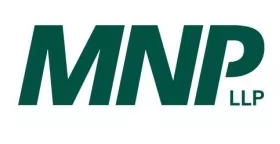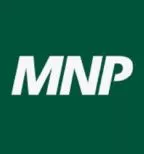Anti-money laundering and anti-terrorist financing measures are designed to deprive criminals and terrorists of the financial means to pursue their objectives. Those measures deputize financial institutions across Canada to detect and report nefarious activities to our financial intelligence agency. Importantly, those reports provide intelligence into the networks, ways and means of terrorists.
Canadian businesses are on the front lines of Canada's anti-money laundering and anti-terrorism financing efforts and are often the first ones to have a suspicion regarding a transaction.
However, businesses and reporting entities such as financial
institutions generally have little experience with terrorist
financing and what to look out for.
As part of the federal government's broader intelligence
efforts to counter these threats, Financial Transactions and
Reports Analysis Centre of Canada (FINTRAC) has worked with
Canadian law enforcement and national security partners to update
indicators of terrorist activity financing – often effected
though money laundering.
Available for the first time publically, FINTRAC's updated list highlights actions which could indicate money laundering activities. It red flags transactions where there could be reasonable grounds to suspect a terrorist activity financing offence.
It is important to note a single indicator on its own may seem insignificant, but combined with others could satisfy the threshold of reasonable grounds to suspect the transaction is related to terrorist activity financing.
Therefore, if one or more of these indicators are present when a client conducts a transaction or a series of transactions, reporting entities should consider the context and all relevant factors to determine whether a suspicious transaction report should be sent to FINTRAC.
Indicators linked to Terrorist Activity Financing
- Client accesses accounts, and/or uses debit or credit cards in high-risk jurisdictions (including cities or districts of concern), specifically countries (and adjacent countries) under conflict and / or political instability or known to support terrorist activities and organizations.
- Client identified by media or law enforcement as having travelled, attempted / intended to travel to high-risk jurisdictions (including cities or districts of concern), specifically countries (and adjacent countries) under conflict and/or political instability or known to support terrorist activities and organizations.
- Client conducted travel-related purchases (e.g. purchase of airline tickets, travel visa, passport, etc.) linked to high-risk jurisdictions (including cities or districts of concern), specifically countries (and adjacent countries) under conflict and/or political instability or known to support terrorist activities and organizations.
- The client mentions that they will be travelling to, are currently in, or have returned from, a high risk jurisdiction (including cities or districts of concern), specifically countries (and adjacent countries) under conflict and/or political instability or known to support terrorist activities and organizations.
- Client depletes account(s) by way of cash withdrawal.
- Client or account activity indicates the sale of personal property / possessions.
- Individual/entity's online presence supports violent extremism or radicalization.
- Client indicates planned cease date to account activity.
- Client utters threats of violence that could be of concern to national security / public safety.
- Sudden settlement of debt(s) or payments of debts by unrelated third party(ies).
- Law enforcement indicates to reporting entity the individual/entity may be relevant to a law enforcement and/or national security investigation.
- Client's transactions involve individual(s) / entity(ies) identified by media or law enforcement as the subject of a terrorist financing or national security investigation.
- Client donates to a cause that is subject to derogatory publicly available information (crowdfunding initiative, charity, NPO, NGO, etc.).
- Client conducts uncharacteristic purchases (e.g. camping/outdoor equipment, weapons, ammonium nitrate, hydrogen peroxide, acetone, propane, etc.).
- A large number of email transfers between client and unrelated third party(ies).
- Client provides multiple variations of name, address, phone number or additional identifiers.
- The sudden conversion of financial assets to a virtual currency exchange or virtual currency intermediary that allows for increased anonymity.
For more information on reporting suspicious transaction reports to FINTRAC, click here to access the agency's Suspicious Transactions guidelines.
Matt McGuire, MNP's National Anti-Money Laundering Practice Leader, recently spoke at the House of Commons Standing Committee on the key indicators needed to deter terrorist financing. He advised terrorist name-list risk screening was no longer a sufficient counter-measure, and there should be a movement towards greater intelligence sharing with and among reporting entities on patterns and typologies.
The content of this article is intended to provide a general guide to the subject matter. Specialist advice should be sought about your specific circumstances.

